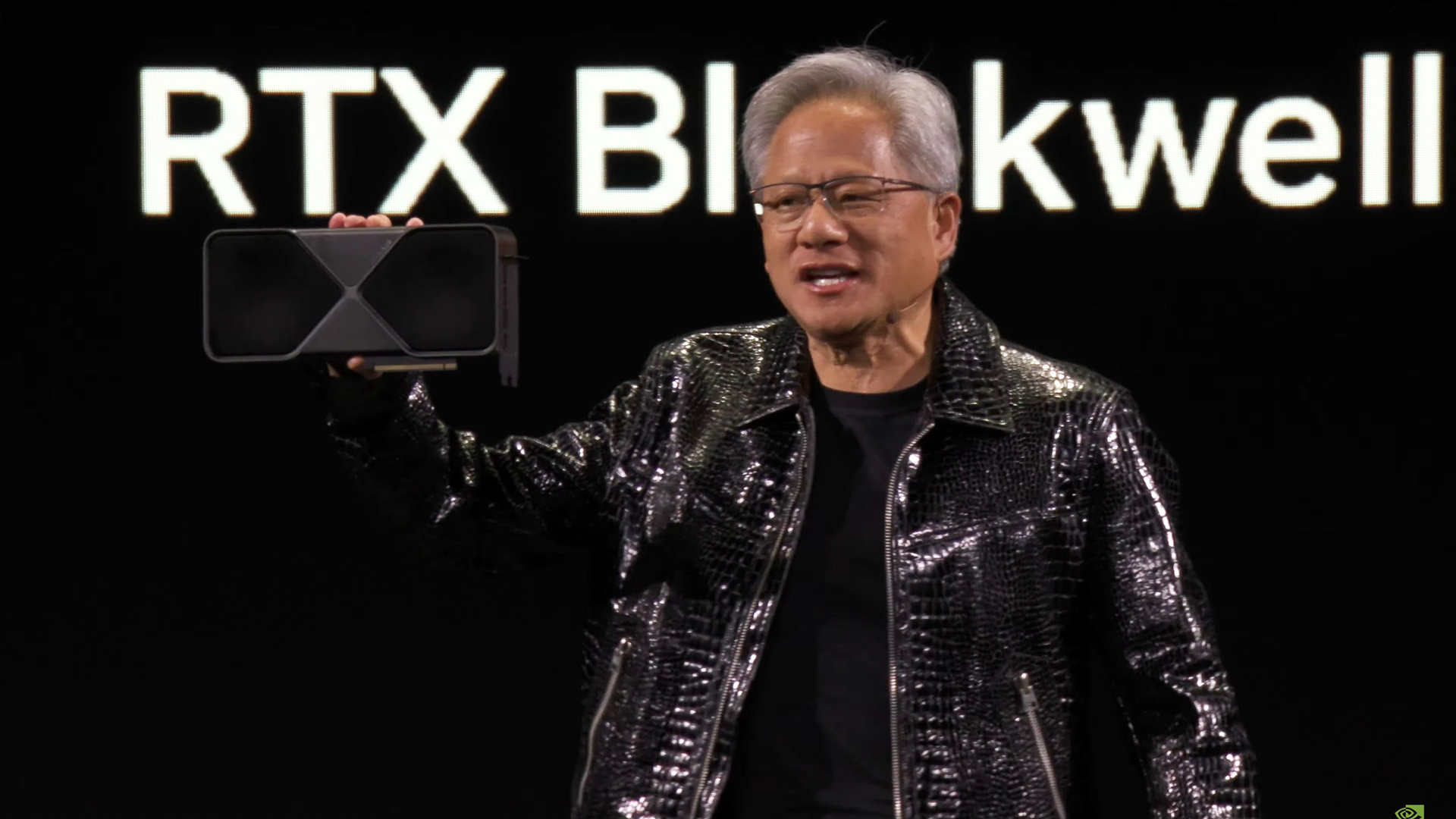
Nvidia has announced the RTX 50-series, codename Blackwell, at CES 2025. The new cards come with massive improvements to AI acceleration, with CEO Jensen Huang claiming "AI is coming home to GeForce".
CEO Huang announced the entire lineup at CES 2025, from the RTX 5090 to the RTX 5070. Let's get right into prices:
- RTX 5090 — $1,999
- RTX 5080 — $999
- RTX 5070 Ti — $749
- RTX 5070 — $549
RTX 50-series specs
The Blackwell family will be led by the RTX 5090, which is a mighty beast. No surprises there. Nvidia cites up to 125 shader TFLOPS, 380 RT TFLOPS, and 4,000 AI TOPS for the Blackwell family, presumably the top GPU configuration with 92 billion transistors, though the RTX 5090 is noted with 3,400 AI TOPS—so a little below the maximum, suggesting it's not quite using the full chip.
For comparison, the RTX 4090 has just over 82 FP32 shader TFLOPS from just over 76 billion transistors.
The RTX 50-series cards also feature GDDR7 memory, with a maximum of 1.8 TB/s of memory bandwidth.
RTX 50-series Founders Edition design
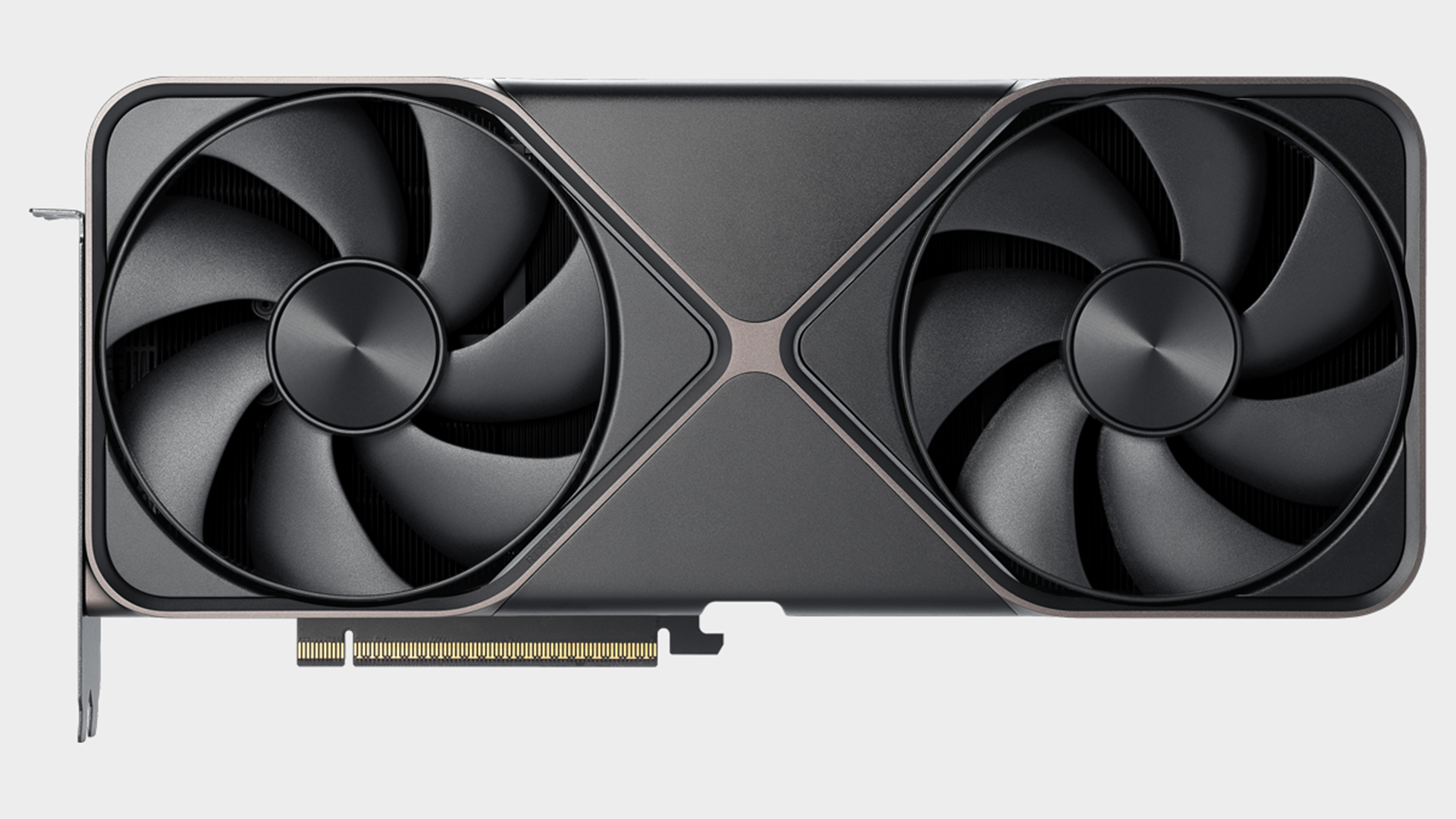
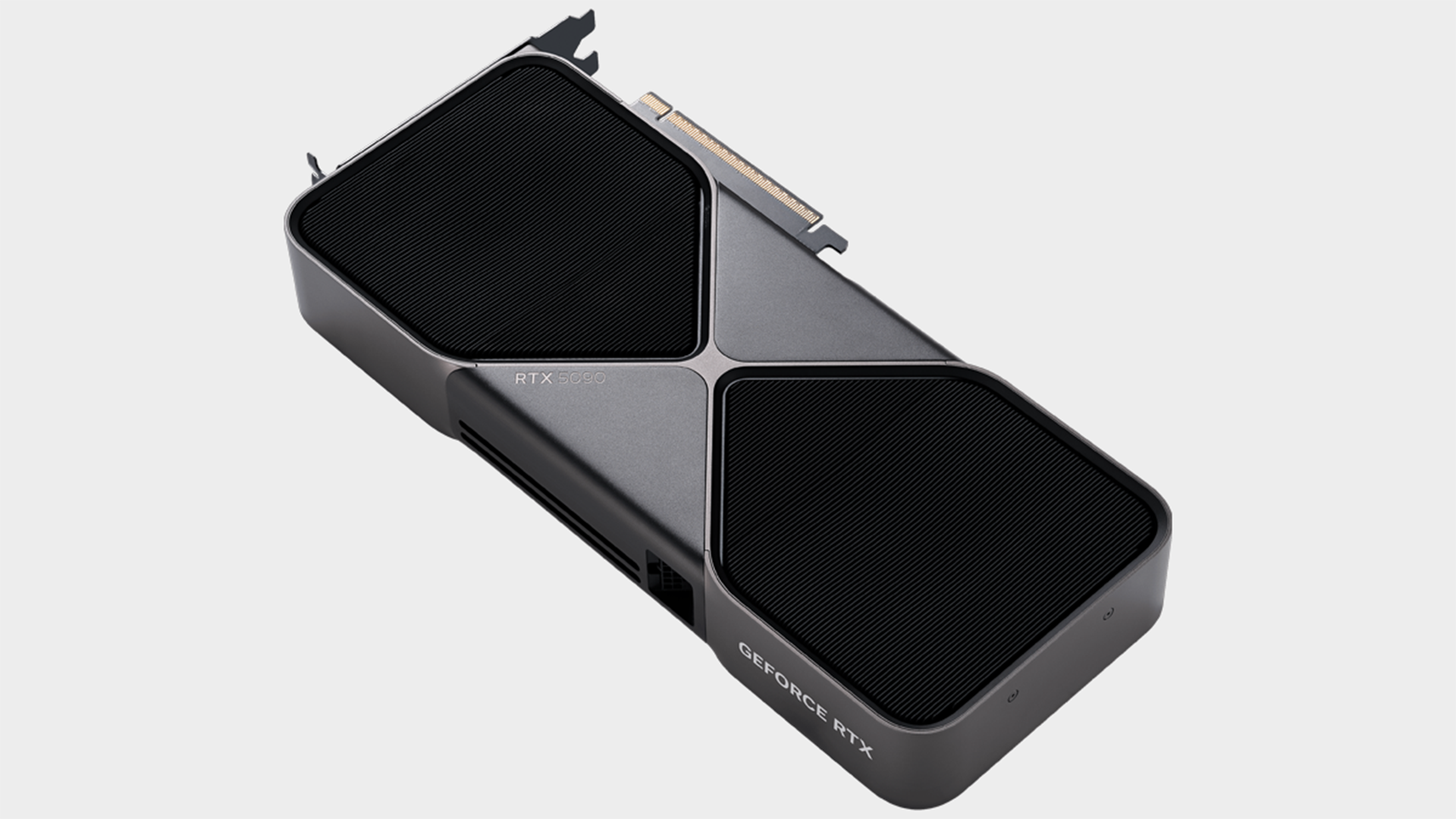
The Founders Edition card, which history tells us will be the one to buy while it's available, comes with two fans in a more conventional layout to the past two generations. Though that's probably underselling the design of these cards somewhat. It's not your average dual-fan GPU, that's for sure.
The PCB sits centrally, with the GPU surrounded on almost all sides by memory and MOSFETs. This then has a vapor chamber attached with heatpipes extending in two directions. The two fans blow air through these and the attached heatsinks.
Altogether, it looks to be a plucky PCB with a ton of cooling, which might be useful considering the RTX 5090 gobbles 575 watts.
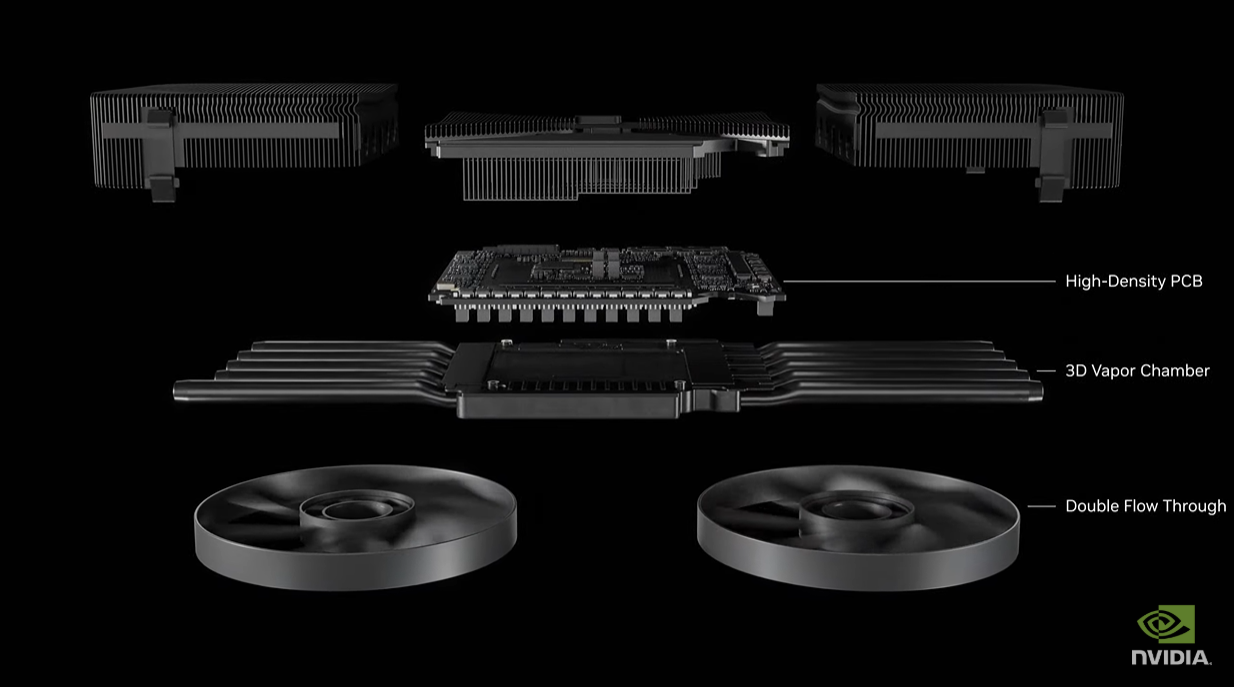
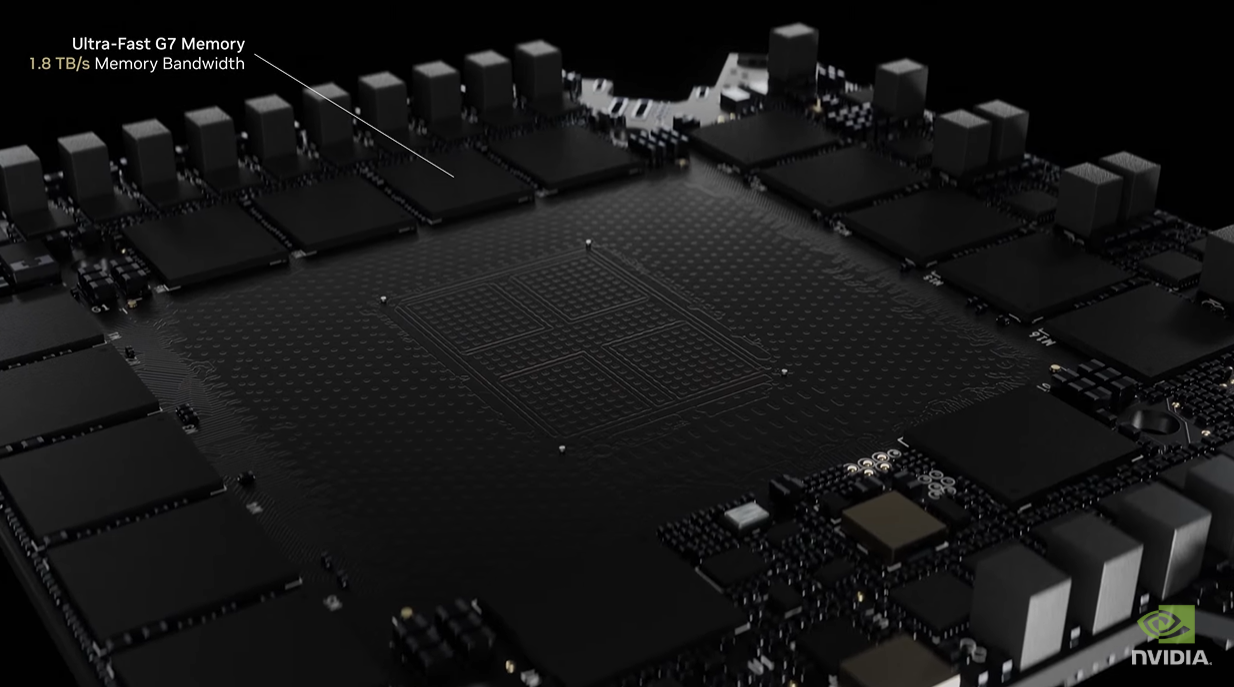
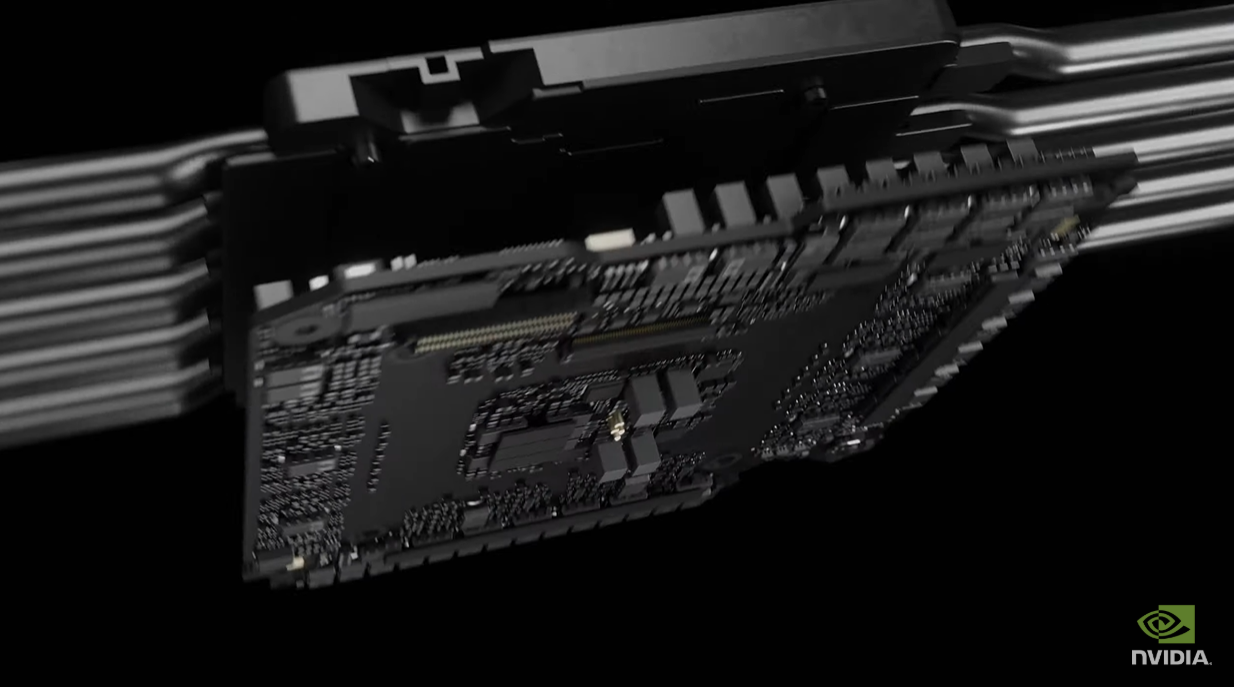
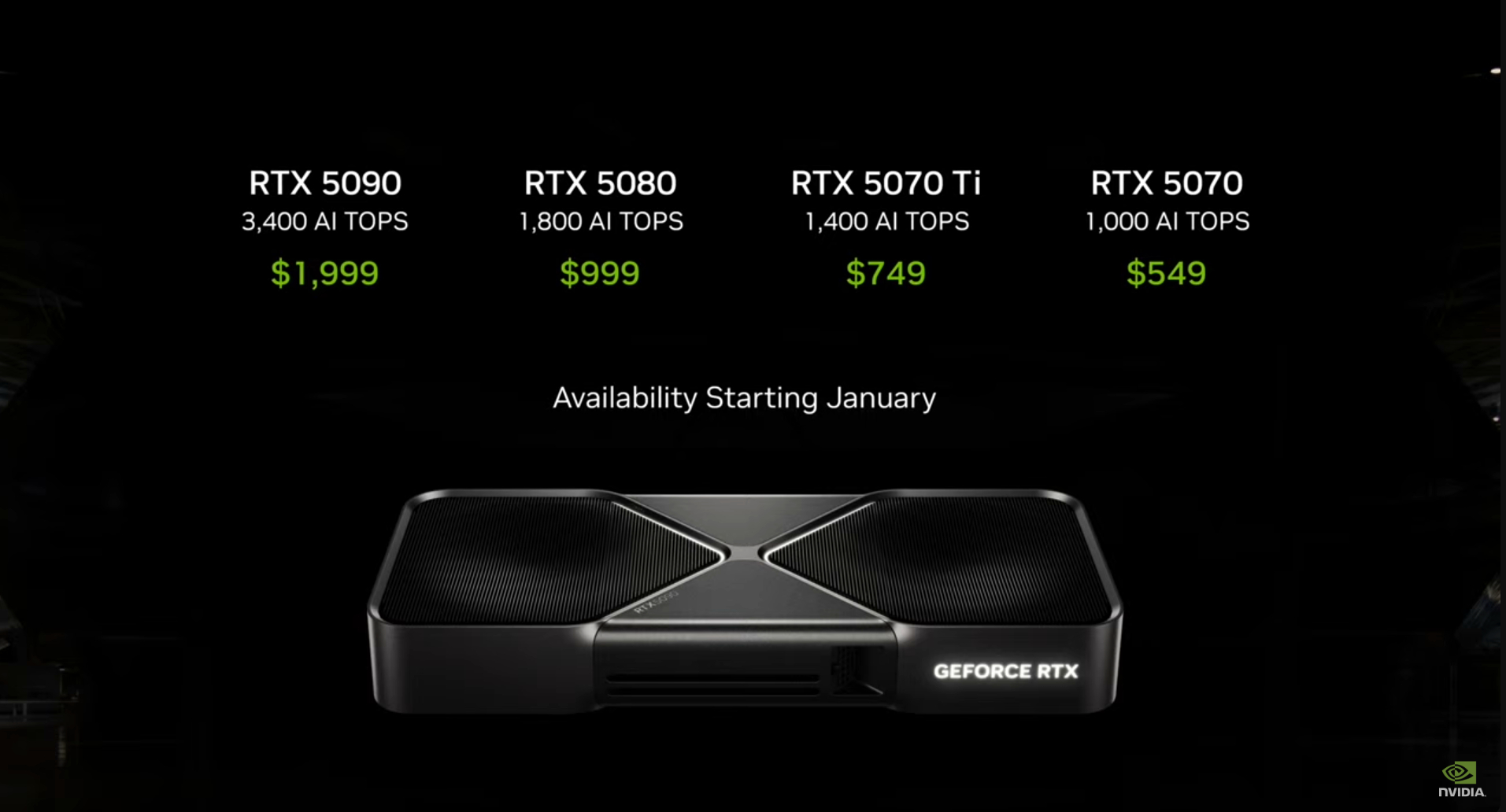
The RTX 5090 and RTX 5080 dimensions are 304 mm long, 137 mm wide, and 2 slots. The RTX 5070 is 242 mm long, 112 mm wide, and 2 slots.
There's no Founders Edition of the 5070 Ti.
RTX 50-series Performance
As for performance comparisons, Nvidia didn't give us much to go on during the stream, except the promise that the RTX 5090 will offer 'twice the performance of the 4090' and the RTX 5070, a $549 card, will compete with the RTX 4090. Though DLSS 4 and new AI features are playing a huge role here, which also means the improvement might be more limited in games that don't support these features.
In the video below, published shortly after the announcement, Nvidia shows how DLSS 4 (a feature called Multi Frame Generation, in fact) helps the RTX 5090 deliver double the frames as the RTX 4090 in a Cyberpunk 2077 ray-traced benchmark.
At least Cyberpunk 2077, Alan Wake 2, and Black Myth: Wukong are confirmed to support DLSS 4 with Multi Frame Generation.
Huang doubled down on this AI uplift for the RTX 5070: "4090 performance at $549," proclaimed Huang during the show.
"Impossible without artificial intelligence. Impossible without 4 teraops of AI Tensor cores. Impossible without the G7 memories."
Here are some benchmark graphs, which Nvidia published alongside the announcement. What's important to note is this is not strictly comparing silicon here, but also the new DLSS Multi Frame Generation feature, which is enabled on the RTX 50-series.
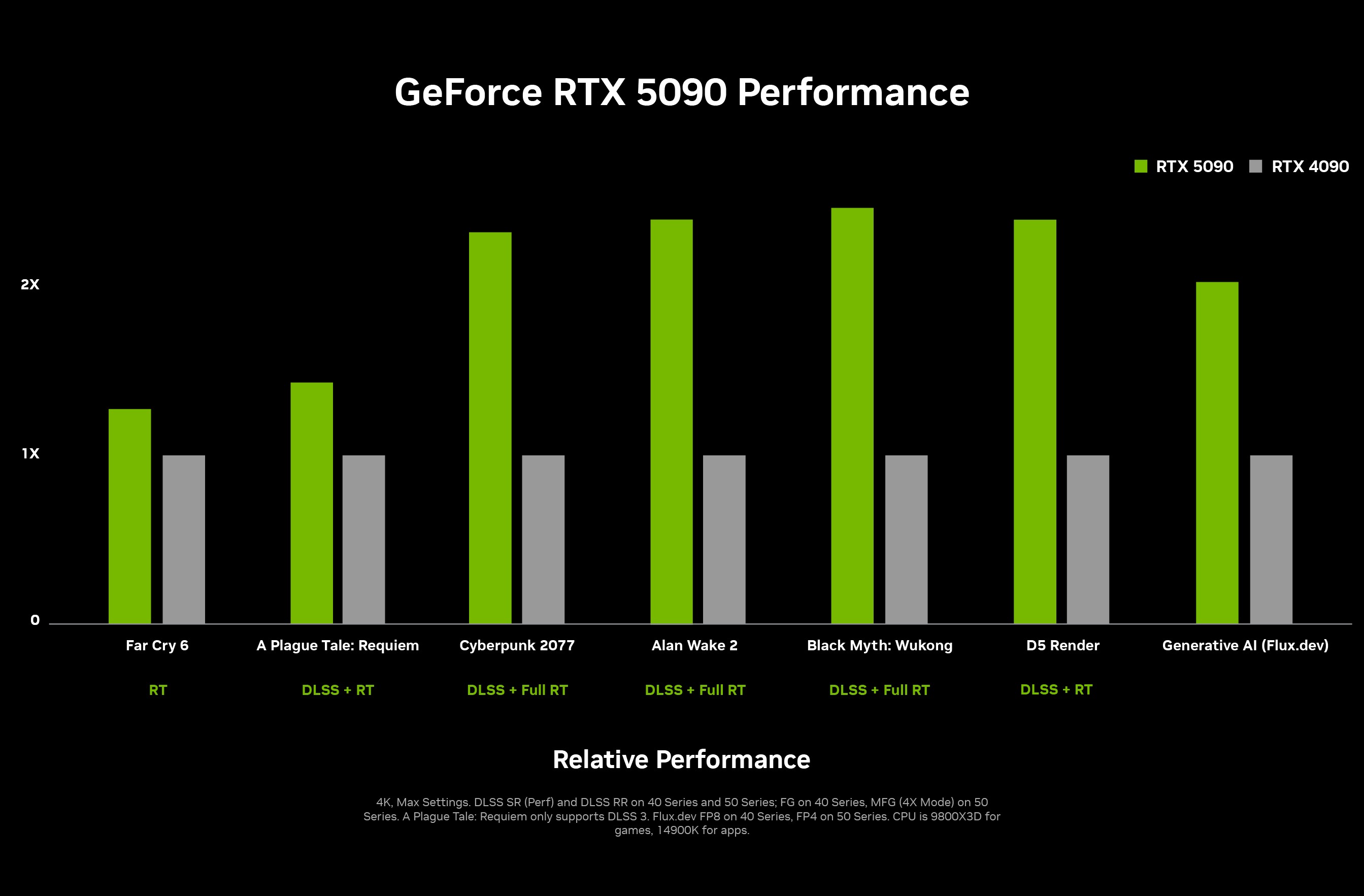
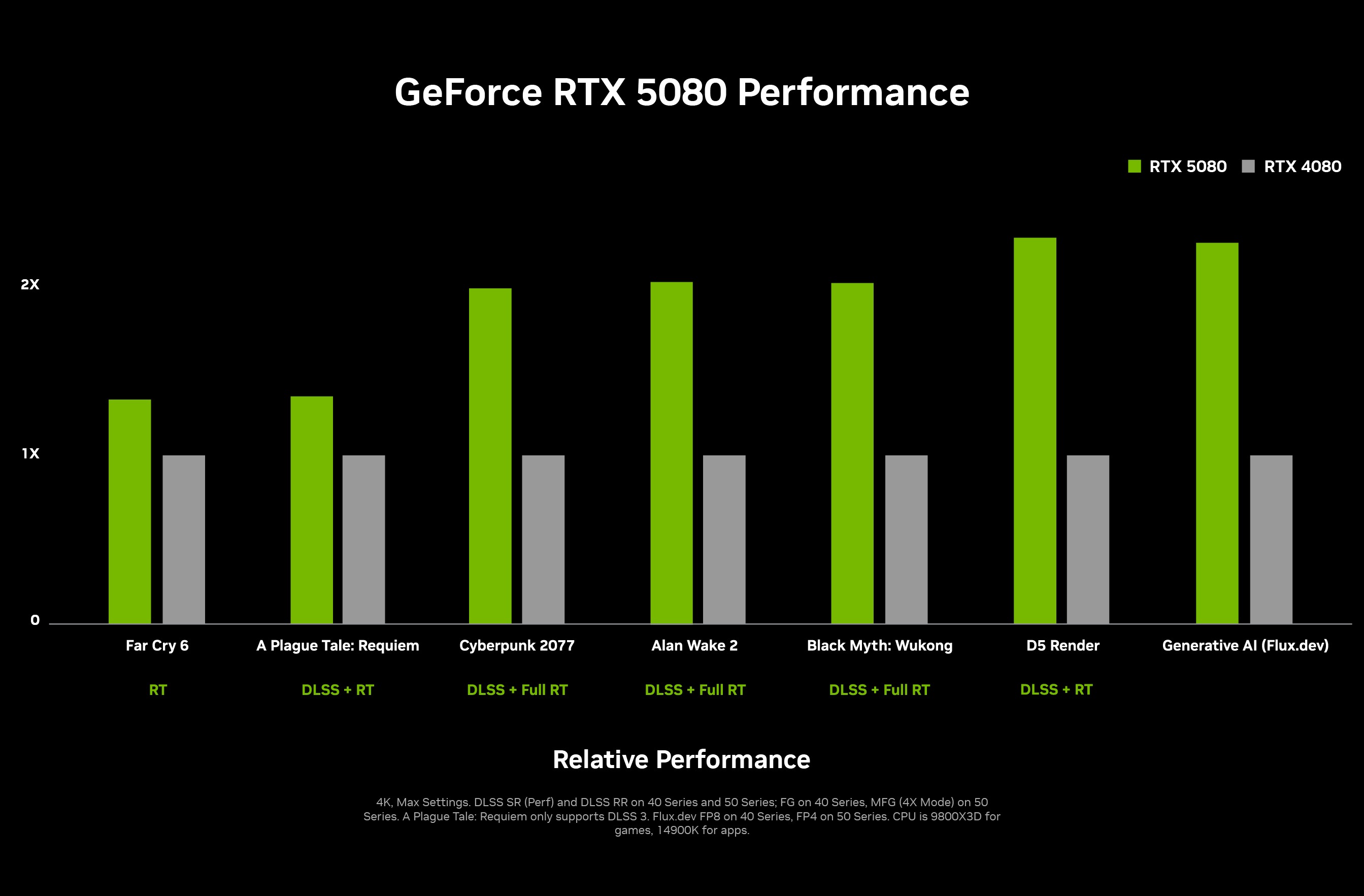
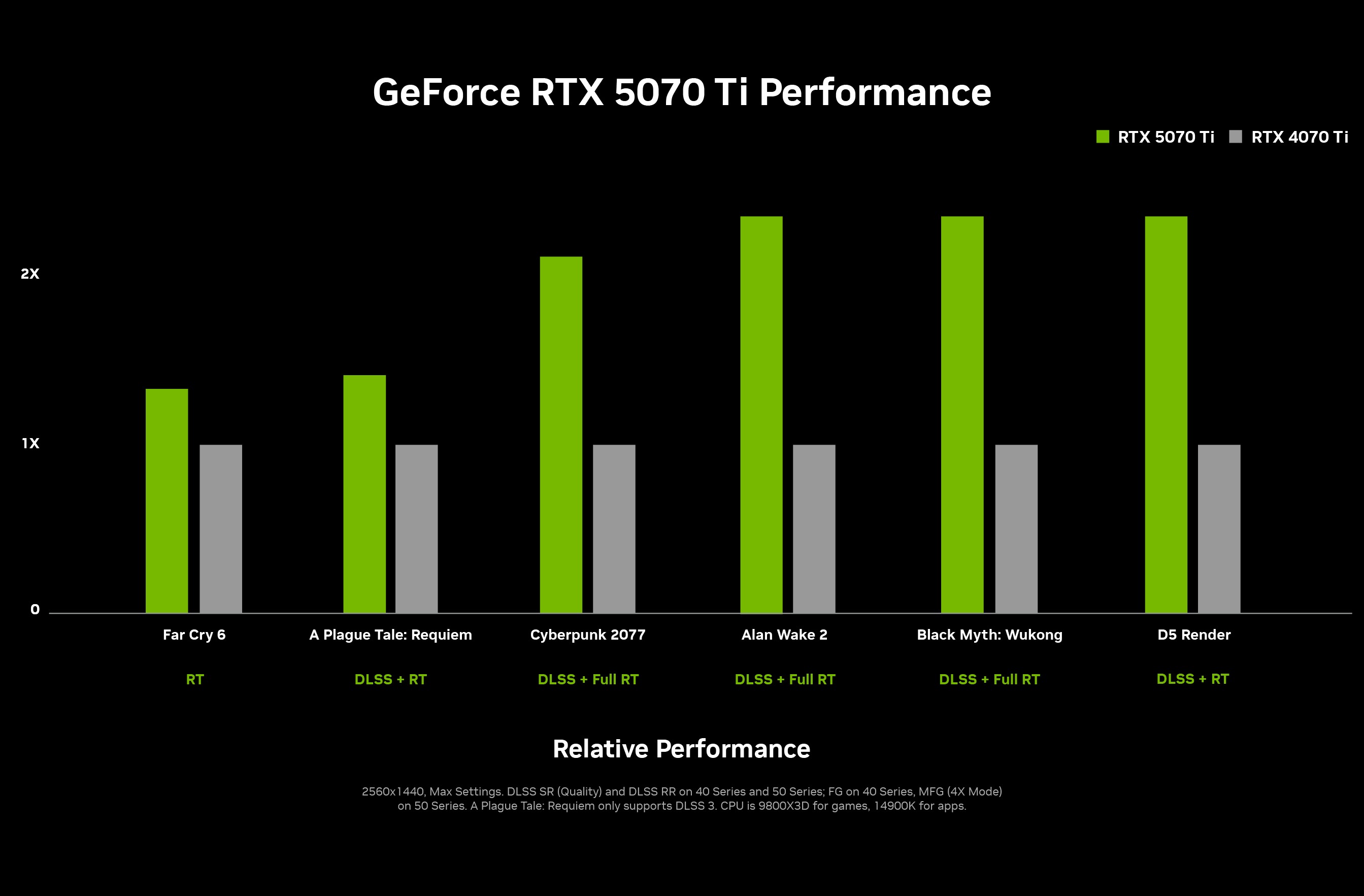

At the beginning of the stream, Nvidia showed off a ray-traced scene rendered (inferred?) in real-time on Blackwell, which included new AI features to massively accelerate performance and save memory.
The RTX 50-series features an AI Management Processor, new Blackwell Tensor Cores with FP4 support, DLSS 4, and Huang alluded to in-shader AI acceleration to help spread the workload of the new AI systems.
There are RTX Neural Shaders, which allow the GPU's programmable shaders to run neural networks. Essentially, in-shader AI acceleration, alongside the Tensor Cores. These can be used to compress textures by up to seven times. As shown in the screenshots below.
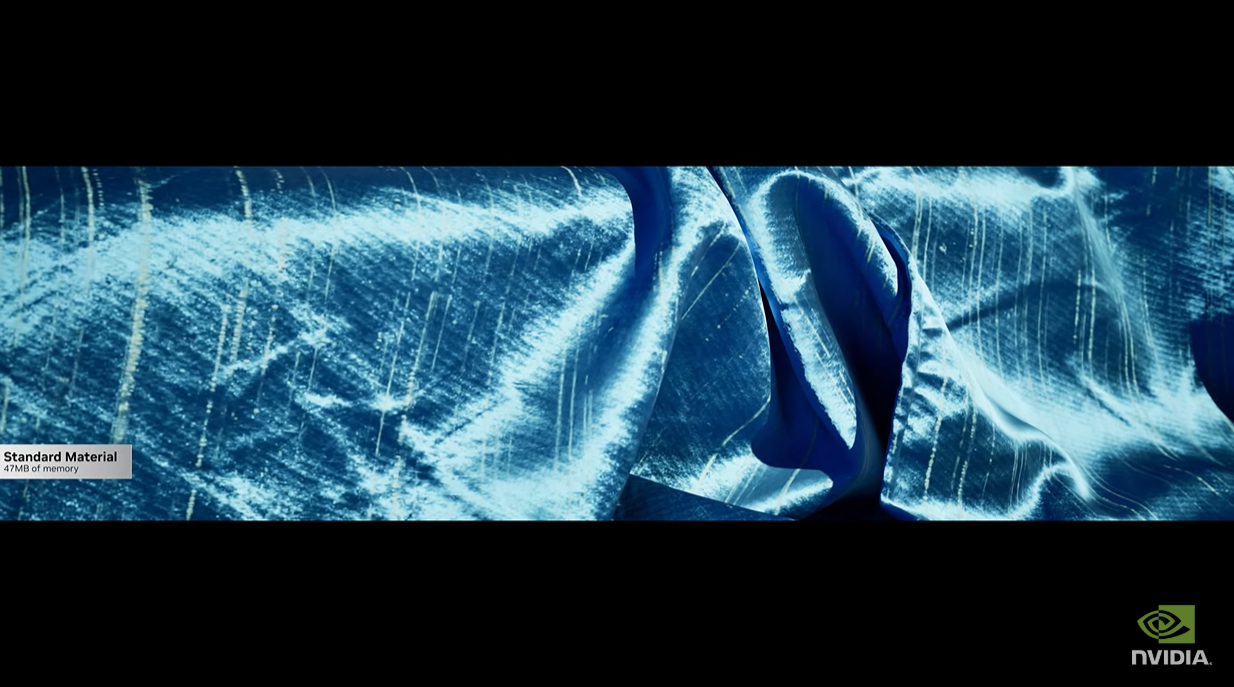
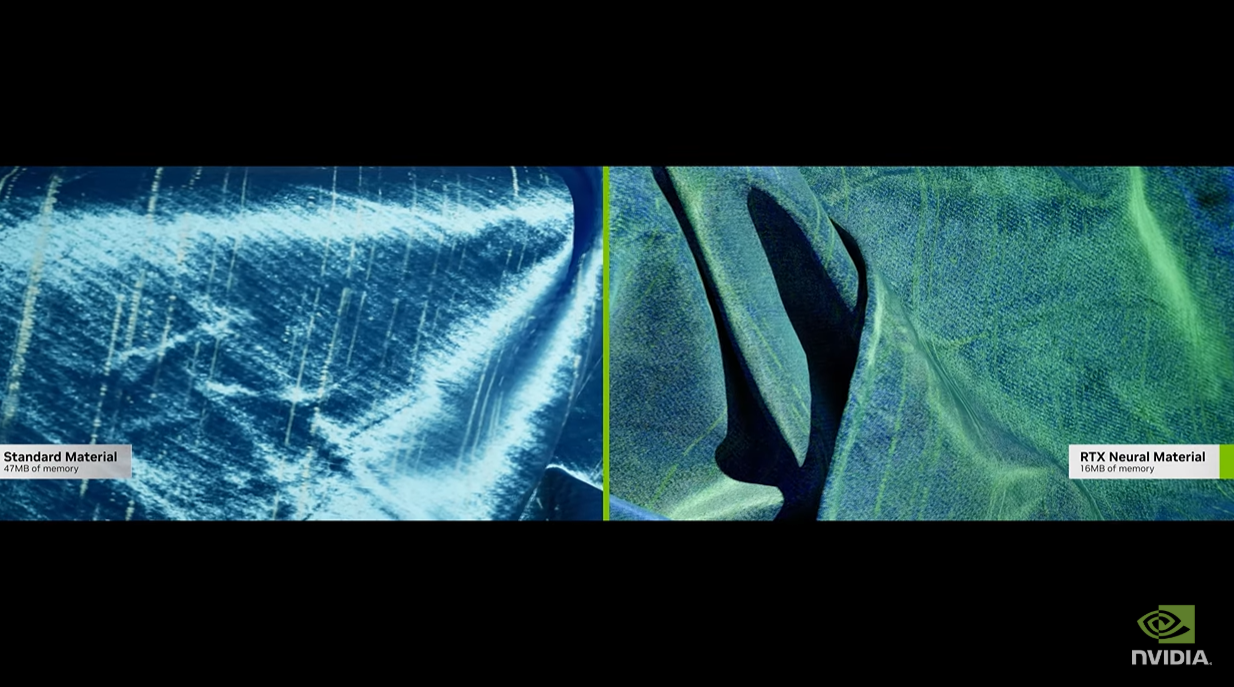
There is also the new DLSS Transformer model, which will power Ray Reconstruction, Super Resolution, and DLAA, and uses the same fundamental architecture design as AI models such as ChatGPT or Google Gemini. Nvidia claims these can improve temporal stability, reduce ghosting, and have higher detail in motion.

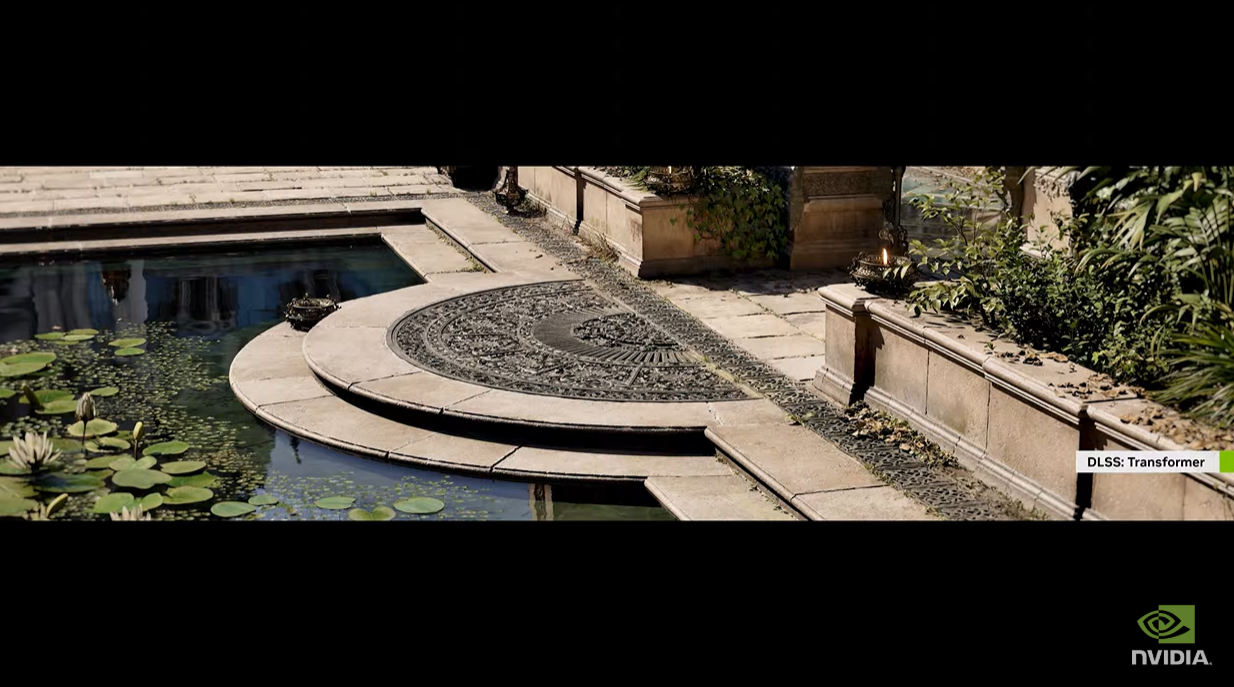
RTX 50-series availability
As for when you can get your hands on these cards, here's the availability:
- RTX 5090 — available January 30
- RTX 5080 — available January 30
- RTX 5070 Ti — availability starting in February
- RTX 5070 — availability starting in February







